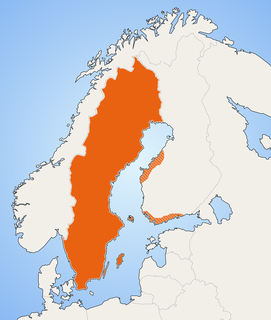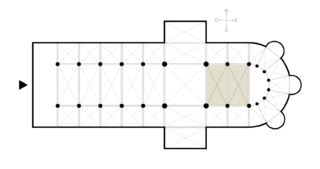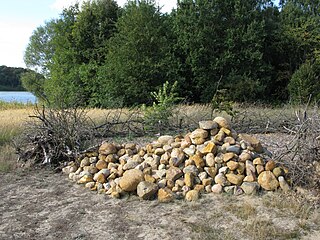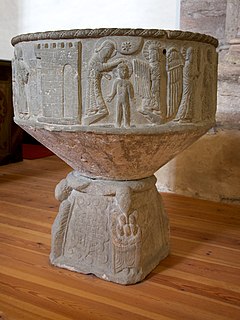
Täby Church is a medieval church in Täby Municipality, in the province of Uppland north of Stockholm. The church is best known for its painted walls and ceilings by Albertus Pictor.

Yttergran Church is a medieval Lutheran church in the Archdiocese of Uppsala in Uppsala County, Sweden.

Frötuna Church is a medieval Lutheran church in the Archdiocese of Uppsala close to Norrtälje in Stockholm County, Sweden.

Häverö Church is a medieval Lutheran church in the Archdiocese of Uppsala in Stockholm County, Sweden.

Jumkil Church is a medieval Lutheran church near Uppsala in the Archdiocese of Uppsala in Uppsala County, Sweden.

Skederid Church is a medieval, former Catholic church that today belongs to the Lutheran Archdiocese of Uppsala. It lies just outside Norrtälje in Stockholm County, Sweden. It was built by Birger Persson, father of Saint Bridget of Sweden, and it is probably the church where she was baptised.

Enåker Church is a Lutheran church located a few kilometres north-east of Sala in the Archdiocese of Uppsala in Uppsala County, Sweden.

Angarn Church is a Lutheran church at Angarn in Vallentuna Municipality, Stockholm County, Sweden. It is located close to Angarnsjöängen nature reserve. The church is associated with the Archdiocese of Uppsala of the Church of Sweden.
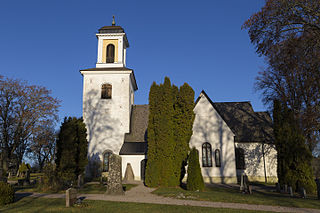
Alsike Church is a Lutheran church at Alsike in Uppsala County, Sweden. It lies in Knivsta Municipality, a suburb to Stockholm. The church is associated with the Archdiocese of Uppsala of the Church of Sweden.

Balingsta Church is a Lutheran church in the Archdiocese of Uppsala in Uppsala County, Sweden. It is one of the best preserved Romanesque churches in the province of Uppland..

Härkeberga Church is a Lutheran church in the Archdiocese of Uppsala in Uppsala County, Sweden. It contains a number of well-preserved 15th-century frescos attributed to Albertus Pictor.

Fresta Church is a Lutheran church in the Archdiocese of Uppsala in Stockholm County, Sweden.
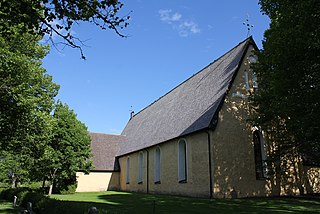
Veckholm Church is a Lutheran church in the Archdiocese of Uppsala in Uppsala County, Sweden.

Munsö Church is a medieval Lutheran church in the Diocese of Stockholm. Its site, Munsö, is a village and formerly an island in Ekerö Municipality, Sweden. Because of post-glacial rebound, this island in Lake Mälaren is now connected to the island Ekerö. Munsö Church lies not far from Väsby hage Nature Reserve. The round church at Munsö is one of a few so-called round churches in Sweden.

Kalix Church is a medieval Lutheran church in Kalix in Norrbotten County, Sweden. It belongs to the Diocese of Luleå. The church is the northernmost medieval church of Sweden.

Boglösa Church is a medieval Lutheran church in the Archdiocese of Uppsala a few kilometres south of Enköping in Uppsala County, Sweden.

Börje Church is a Lutheran church in the Archdiocese of Uppsala in Uppsala County, Sweden, located west of Uppsala.

Färlöv Church is a medieval Lutheran church in Färlöv in the province of Scania, Sweden. It belongs to the Diocese of Lund.

Lagga Church is a medieval Lutheran church in the Knivsta Municipality in the province of Uppland, Sweden. It belongs to the Archdiocese of Uppsala.
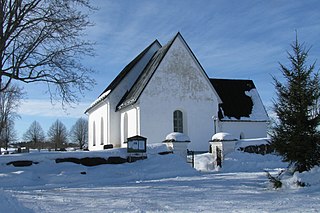
Lohärad Church is a medieval church in the Archdiocese of Uppsala in Stockholm County, Sweden.

